
Rubia is the type genus of the Rubiaceae family of flowering plants, which also contains coffee. It contains around 80 species of perennial scrambling or climbing herbs and subshrubs native to the Old World. The genus and its best-known species are commonly known as madder, e.g. Rubia tinctorum, Rubia peregrina, and Rubia cordifolia.

Trema is a genus of about 15 species of evergreen trees closely related to the hackberries (Celtis), occurring in subtropical and tropical regions of southern Asia, northern Australasia, Africa, South and Central America, and parts of North America. They are generally small trees, reaching 10–20 m (33–66 ft) tall.

Melastomataceae is a family of dicotyledonous flowering plants found mostly in the tropics comprising c. 175 genera and c. 5115 known species. Melastomes are annual or perennial herbs, shrubs, or small trees.
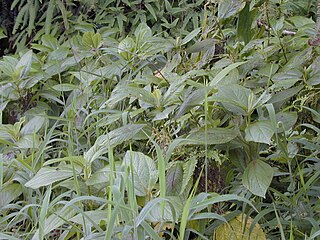
Boehmeria is a genus of 47 species of flowering plants in the nettle family Urticaceae. Of the species, 33 are indigenous to the Old World and 14 to the New World; no species is indigenous to both the Old and New Worlds. The species include herbaceous perennials, shrubs and small trees. Although related to the similar-looking species of the stinging nettles of genus Urtica, species of Boehmeria do not have stinging hairs. Because of the similarity in appearance, some species are commonly called "false nettles".

Anaphalis is a genus of herbaceous and woody flowering plants within the family Asteraceae, whose members are commonly known by the name pearl or pearly everlasting. There are around 110 species with the vast majority being native to central and southern Asia. There is one species native to North America that is fairly well known and popular in cultivation, namely the western pearly everlasting.
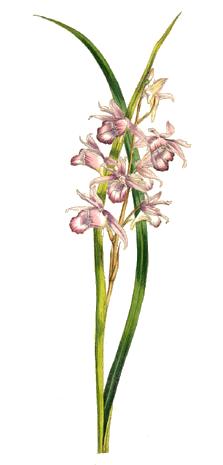
Phaius, commonly known as swamp orchids or in Chinese as 鶴頂蘭屬/鹤顶兰属 , is a genus of forty-five species of flowering plants in the orchid family, Orchidaceae. They are evergreen, terrestrial herbs which form clumps with crowded, sometimes stem-like pseudobulbs, large, pleated leaves and relatively large, often colourful flowers. Species in this genus are found in the tropical parts of Africa, Asia, Southeast Asia, New Guinea, Australia, and various islands of the Pacific and Indian Oceans. One species is also naturalized in Hawaii, Florida, and the Caribbean.
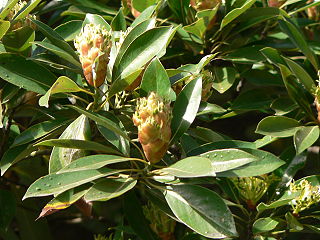
Machilus is a genus of flowering plants in the family Lauraceae. It is found in temperate, subtropical, and tropical forest, occurring in China, Korea, Japan, Taiwan, Indochina, the Indian subcontinent, Malaysia, Indonesia, and the Philippines. It is sometimes included in the genus Persea, and currently includes about 100 species.

Gastrodia, commonly known as potato orchids or as 天麻属 , is a genus of terrestrial leafless orchids in the family Orchidaceae, about ninety of which have been described. Orchids in this genus have fleshy, upright stems and small to medium-sized resupinate flowers with narrow sepals and petals. They are native to Asia, Australia, New Zealand, central Africa, and various islands of the Indian and Pacific Oceans.

Oenothera fruticosa, the narrowleaf evening primrose or narrow-leaved sundrops, is a species of flowering plant in the evening primrose family.
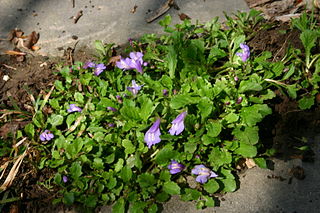
Mazus is a genus of low-growing perennial plants. It has been placed in various plant families including Phrymaceae, Scrophulariaceae, and recently in the family Mazaceae. Consisting of around 40 species, this genus is generally found in damp habitats in lowland or mountain regions of China, Japan, Southeast Asia, Australia and New Zealand.

Aphyllorchis, commonly known as pauper orchids or as 無葉蘭屬/无叶兰属 , is a genus of about twenty species of terrestrial leafless orchids in the family Orchidaceae. Orchids in this genus have fleshy, upright stems and small to medium-sized resupinate flowers with narrow sepals and petals. They are native to a region extending from India east to China and Japan, south to Indonesia, New Guinea and Queensland.

Cremanthodium is a large genus of flowering plants in the daisy family.
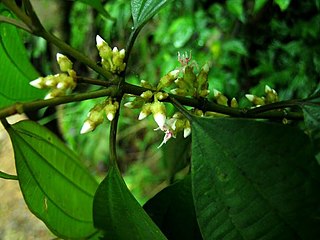
Blastus is a genus of plants in the family Melastomataceae. Species can be found in: Japan, China, Indo-China and west Malesia.
Tashiroea is a genus of plants in the family Melastomataceae. Species in this group resemble morphologically those in genus Bredia, but differ in indumentum of mature leaf, leaf surface sculpture and capsule. This genus includes 11 species, eight in southeastern mainland China, one in Taiwan, and two in the Ryukyus. Most species in this group prefer open or dense forests, slopes, stream banks, alt. 50–2300 m.
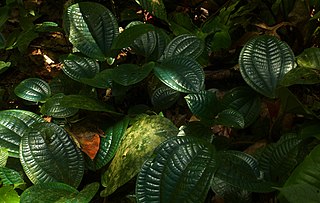
Phyllagathis is a genus of flowering plants in the family Melastomataceae, native to India, southern China, Southeast Asia, and Malesia. The taxon is believed to be highly polyphyletic.
Plagiopetalum is a genus of flowering plants belonging to the family Melastomataceae.














